open main page for all woods open page 2 for articles
WAVY GRAIN
A form of grain in which the wood fibers run up/down the tree in a wavy pattern rather than straight up/down the trunk as is normally the case.
Although you will see burls that have grain, possibly on ALL faces of a burl cube for example, that "wave", that's in the nature of burls and is not what "wavy grain" means in the context of this page. Wavy grain, as used here, describes the fairly rare occurance of wood fibers that wave, in unison, for fairly long distances UP AND DOWN the length of the tree. It cannot be seen in end grain, as is illustrated particuarly well in the Northern red oak sample down below.
Wavy grain, as the term is being used on this page, may or may not (but usually does) result in curly figure. Curly figure is generally NOT caused by wavy grain but rather is caused by interlocked grain or other variations in grain and/or alternating directions of wood fibers. Wavy grain is considerably more rare than curly figure. The difference is discussed further, and illustrated, at the bottom of this page.
Examples:
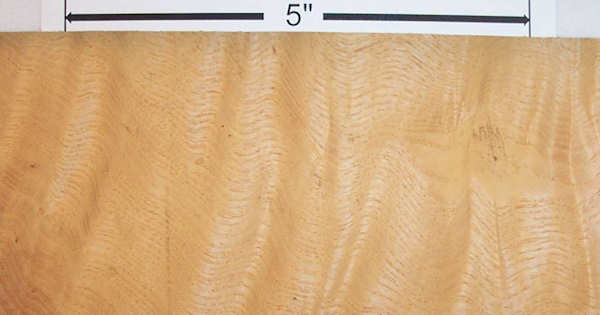
wavy grain olive ash (that also has curly figure)

wavy grain on the face of a mango plank
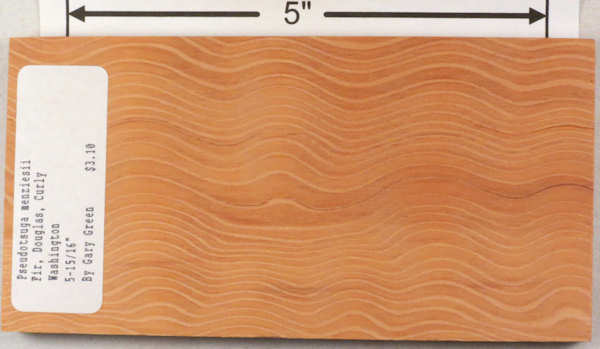
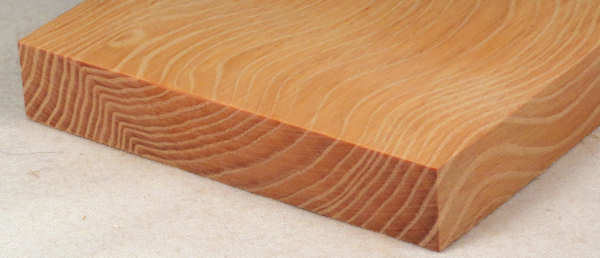
a sample plank of Douglas fir with wavy grain. Although the lines in the end grain are certainly not straight, they do not form a wavy pattern
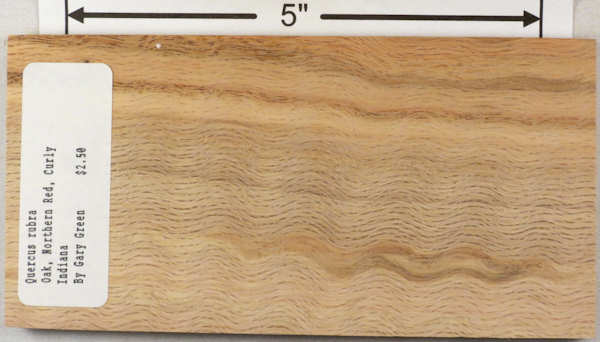
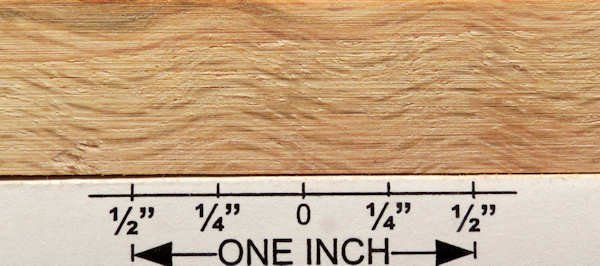
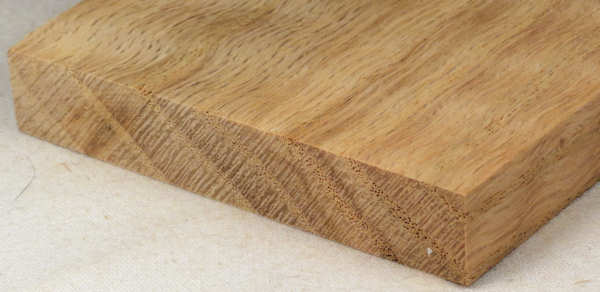
a sample plank of Northern red oak. You can see very clearly that the "wave" is in the face grain and side grain (both surfaces because it's rift cut) and NOT the end grain. The end grain pattern clearly isn't straight but it does not form a wavy pattern, just one change in grain direction. Also, this piece has a very light curl on the face but that curl is very weak compared to the curl in the maple piece at the bottom of the page, which does not have any wavy grain.

face grain of a piece of bulletwood that has wavy grain on the face and curly figure on the edge (not shown)
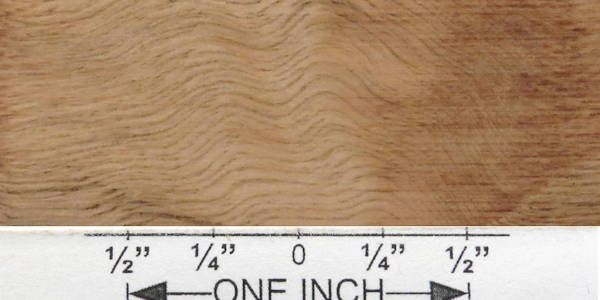
face grain of a piece of laurel oak that has wavy grain on the face and a very mild curly figure on the edge (not shown)
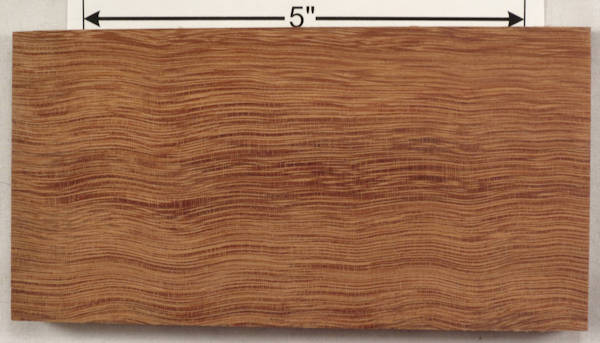
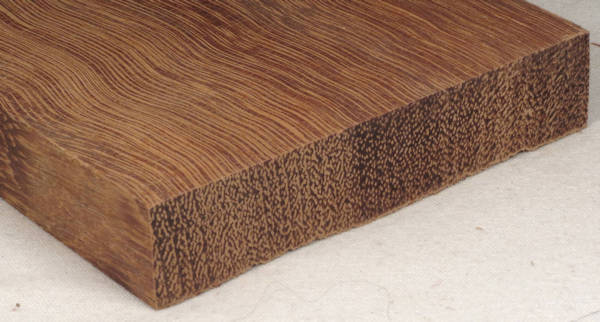
face and end grain shots of a piece of quartersawn kempas with wavy grain
AND ... just to be clear, let's look at something that is NOT wavy grain
(but looks like it might be)
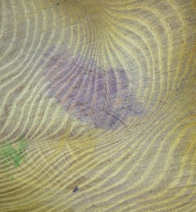
End grain area of a particularly twisty osage orange tree. This has the wave but it is NOT a wave in the fibers running up and down the tree, it is a swirl in the grain lines on the end grain. The owner of this piece said that the face grain does not look wavy (although it does have some grain swirl)
curly figure without wavy grain
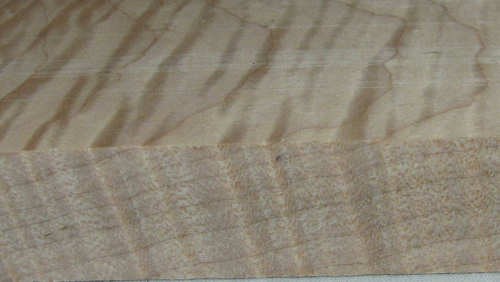
The face grain (upper part) and side grain (lower part) of a nice piece of very curly maple. If you look carefully at the side grain, you will see that it, like the face grain, shows strong curly figure but the grain lines have no wave at all. The face grain shows "cathedral grain" figure typical of a flat cut surface and the side grain, which is a quartersawn surface, shows straight grain lines (at an angle, admittedly, but essentially straight going from lower left to upper right)












